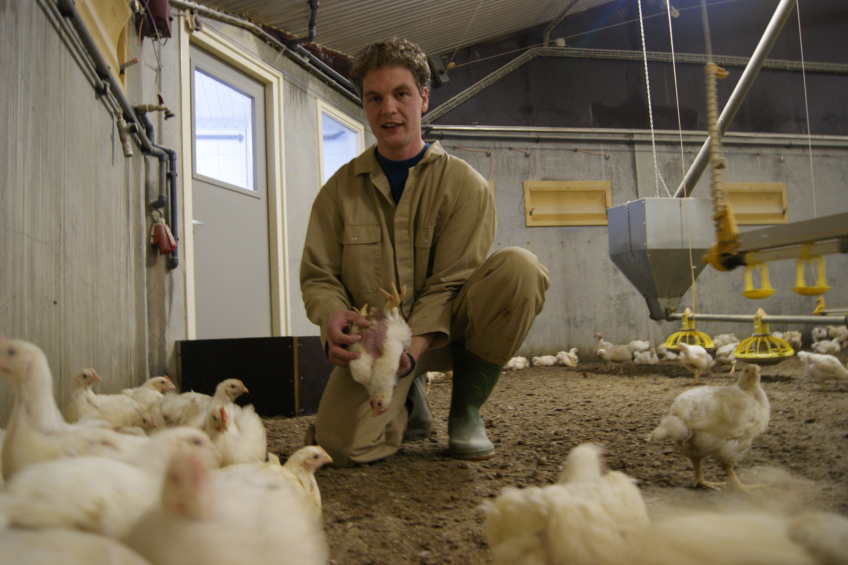Prevention of immunosuppression

Many factors can lead to the reduction in ?the activity or efficacy of immune response ?in birds. Prevention of immunosuppression ?is fundamental in maintaining a healthy ?poultry operation.
By Muhammad Imran Arshad, Iftikhar Hussain, Institute of Microbiology and Zia-Ur-Rahman, Salman Latif Butt, University of Agriculture, Faisalabad, Pakistan
Immunity is the defence mechanism of the body that interacts with the invading organisms. There is a never ending battle between the cells and organs of the immune system and the pathogens throughout life. The bird’s immune system mainly consists of lymphatic vessels and lymphoid tissues. Primary lymphoid organs include thymus located in the neck region which is responsible for T-cells maturation and differentiation and Bursa of Fabricious (BF) which is an organ found only in birds. The secondary lymphoid organs are spleen, bone marrow gland of Harder (located ventral and posterior medial to eye ball), mural lymph nodules and lymph nodes.
The immune system of birds can be divided into non-specific and specific immune responses. The non-specific immune mechanisms encompasses genetic factors, body temperature, anatomic features, normal microflora of skin and gut, respiratory tract cilia, secretions like lysozymes, environment, age, inflammatory processes, complement and interferons (IFNs). Specific immune mechanisms (Acquired system) are characterised by specificity, heterogeneity and memory. This system has two types of immune responses; non-cellular and cellular immune responses.
The bird’s immune system differs from mammals in the way of maturation and diversity of immune response. In birds, passive immunity is passed on in the amniotic fluid and egg yolk. It is transferred to the embryo when it swallows amniotic fluid during hatch and absorption of the egg yolk after hatch. These abs give the newly hatched chick’s immunity a start while their own immune system is developing. The bird’s immune system begins developing before hatch and is complete by sexual maturity. During the first six weeks of a chick’s life a process of gene conversion takes place in BF that gives diversity to the B-cells in birds.
Causes of immunosuppression
Immunosuppression is the reduction in the activity or efficacy of immune response or decrease in the ability to respond to foreign challenges. Immunosuppression can occur due to viral infections (see box), toxins, malnutrition and physical factors. Mycotoxins and bacterial toxins in feed lead to immunosuppression in birds. Mouldy grains are a source of fungal toxins (Aflatoxins, Ocharatoxins, T-2 toxins and Fusarium toxins). These toxins lead to decreased chemotactic and phagocytic immune responses.
Malnutrition includes not only the deficiencies but also excess or imbalances of the basis or individual nutrients. Starvation can cause thymic atrophy leading to decreased T-cell population and cell mediated immune response. Deficiency of Zn, Cu, Se and Fe leads to immunosuppression in birds. Vitamin A deficiency causes decreased lymphocyte proliferation and decreased Igs production. Similarly, vitamin E deficiency causes decreased Igs level in serum. Management practices, extremes of hot and cold, overcrowding and ammonia gas accumulation lead to immunosuppression in birds as well.
Preventing immunosuppression
To prevent or control immunosuppression a series of preventive measures should be adopted. For one stress free management practices are important. Furthermore optimal nutrition and balanced feed should be offered to birds. In feed, antitoxins and toxin binders can be added to prevent food-borne intoxications. Effective sanitation programmes should be followed and good disease diagnosis of vertically transmitted diseases at breeder level e.g. Salmonellosis, Mycoplasmosis, Marek’s disease, Adenoviruses and treatment at that step should be in place. Efficacious vaccination and medication programmes should be adopted for immunisation and treatment of birds and an antibody surveillance programme should be developed to check the immune status of birds periodically. Only with the help and constant attention of the poultry farmer is the bird’s immune system able to function in an optimal way in an intensive production environment.
WP
Further information: drimranarashad@yahoo.com
Viral diseases causing immunosuppression
Reoviruses: Leads to change in size and structure of immune organs which results in immunosuppression at cellular level.
Adenoviruses: Infects adenoids or glands in the birds leading to immunosuppression. These viruses cause HPS (Hydropericardium syndrome) and EDS (Egg drop syndrome) in chickens while hemorrhagic enteritis in Turkeys.
Retroviruses: These are also named as cancer causing viruses, these lead to atrophy of thymus and bursa of Fabricious.
As a result both cellular and humoral immune responses are depressed in birds.
Herpesviruses: These viruses cause lymphoid neoplasms and cause bursal as well as thymic lymphocyte destruction
leading to decreased humoral and cellular immune responses. Marek’s disease in poultry is caused by this class of viruses.
Birnaviruse: Mainly infect the organ which is only present in birds i.e. bursa of Fabricious (BF). These viruses lead to
destruction of B-cells in BF resulting in severe immunosuppression. Infectious bursal disease (IBD) is caused by this virus. These viruses also infect Harderian’s gland of birds leading to decreased plasma content of that gland.
Circoviruses: Vertically transmitted viruses that cause anatomical, pathological and immunological lesions. These infect haemopoietic and lymphopoietic tissues. These viruses effect Fc-receptors expression, IL-1 production, phagocytosis and decreased development of Tc-cells. In poultry these cause “Blue Wing Disease”.













